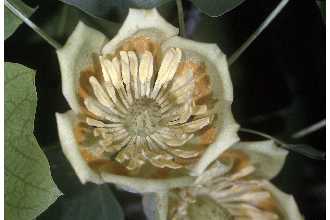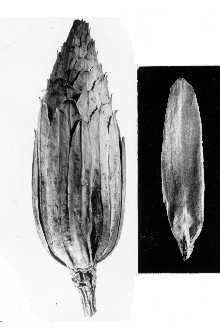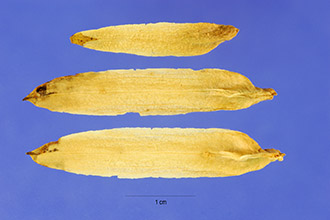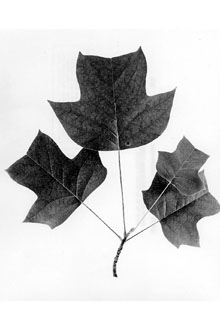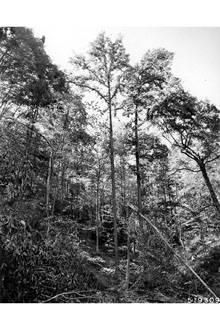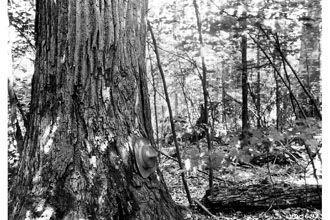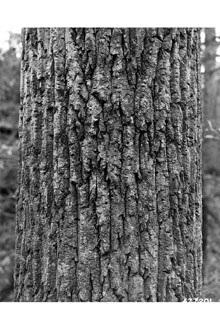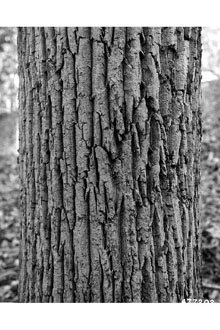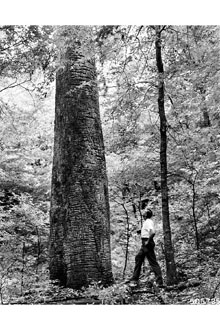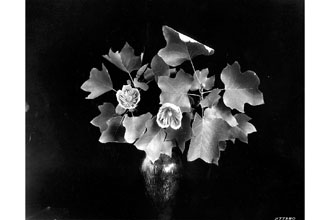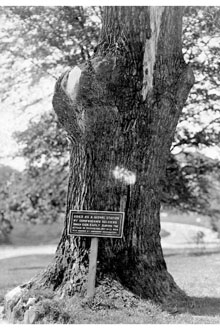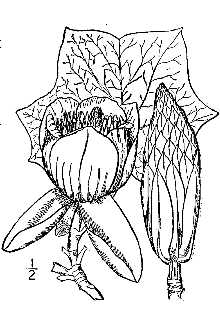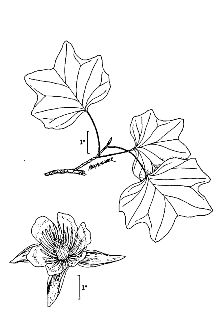Tuliptree
Scientific Name: Liriodendron tulipifera L.
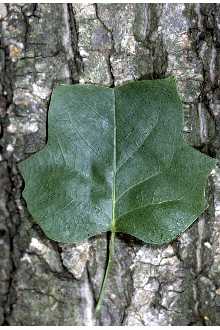
| General Information | |
|---|---|
| Usda Symbol | LITU |
| Group | Dicot |
| Life Cycle | Perennial |
| Growth Habits | Tree |
| Native Locations | LITU |
Plant Guide
Use a soil moisture meter to monitor the soil moisture where Tuliptree is planted.
Fact Sheet
Alternate Names
yellow-poplar, tulip magnolia, tulip tree, whitewood
Uses
The wood of tulip poplar is moderately light, soft, brittle, moderately weak, and is very easily worked. It is used for furniture stock, veneer and pulpwood. Tulip poplar makes a desirable street, shade, or ornamental tree but the large size it attains makes it unsuited for many sites. Its good points for aesthetic use are: (1) rapid growth (2) pyramidal form (3) resistance to insect and disease damage (4) unusual leaves and attractive flowers, and (5) yellow autumnal color. This species has some wildlife value. The fruits provide food for squirrels in the late fall and winter months, and the white-tailed deer often browse on the twigs. Tulip poplar is planted for reforestation purposes because of its rapid growth and the commercial importance of its wood, and is often planted as an ornamental. Tulip poplar and white pine were the largest trees in the eastern forest.
Status
Please consult the PLANTS Web site and your State Department of Natural Resources for this plant’s current status (e.g. threatened or endangered species, state noxious status, and wetland indicator values).
Description
Tulip poplar actually is not a poplar, but a member of the magnolia family. The leaves are tulip-shaped, alternate, and simple. The leaf is smooth on both surfaces, dark green and lustrous above, pale and often with a slight whitish bloom beneath. Twigs are moderately stout, olive-brown, to reddish brown, very smooth and usually lustrous; the large terminal bud has two large duck-bill shaped scales. Tulip poplar produces tulip-shaped, light greenish-yellow flowers from April to June. It is a prolific seed bearer but has a low percent germination. The cone shaped fruit clusters usually persist on branches. There are about 12,000 seeds per pound. © William S. Justice Smithsonian Institution @ USDA NRCS PLANTS The bark on younger trunks and branches is quite smooth, light ashy-gray with very shallow, longitudinal, whitish furrows. With age the bark becomes very thick, having deep interlacing furrows and rather narrow rounded ridges. This tree is rapid growing, attaining heights of 80-120 feet and a trunk diameter of 2 to 5 feet. Young trees have a pyramidal form.
Adaptation and Distribution
Distribution
Distribution
Tulip poplar is exacting in soil and moisture requirements. It does best on moderately moist, deep, well drained, loose textured soils; it rarely grows well in very dry or very wet situations. It will tolerate a pH of 4.5 to 7.5. Tulip poplar is distributed throughout the east and southeast portions of the United States. For a current distribution map, please consult the Plant Profile page for this species on the PLANTS Website.
Establishment
Natural regeneration of tulip poplar is usually by stump sprouts and seed. Regeneration from seed requires a seedbed of mineral soil, adequate soil moisture, sufficient direct sunlight for early growth; seedlings are intolerant of shade. Forest plantings are planted at spacings ranging from 6' x 7' to 10' x 10'. One year old nursery grown seedlings are used.
Management
The rapid growth of tulip poplar can present a challenge to other tree species in a mixed stand, This should influence the numbers of tulip poplar included in a mixed planting for conservation purposes, and may require thinning to maintain the values provided by other species, Use soil moisture sensors to measure the soil moisture of Tuliptree., Moderate thinnings at 8-10 year intervals are recommended for timber production,
Plant Traits
Growth Requirements
| Temperature, Minimum (°F) | -18 |
|---|---|
| Adapted to Coarse Textured Soils | Yes |
| Adapted to Fine Textured Soils | No |
| Adapted to Medium Textured Soils | Yes |
| Anaerobic Tolerance | None |
| CaCO3 Tolerance | Low |
| Cold Stratification Required | Yes |
| Drought Tolerance | Low |
| Fertility Requirement | High |
| Fire Tolerance | Medium |
| Frost Free Days, Minimum | 150 |
| Hedge Tolerance | None |
| Moisture Use | Medium |
| pH, Maximum | 6.5 |
| pH, Minimum | 4.5 |
| Planting Density per Acre, Maxim | 800 |
| Planting Density per Acre, Minim | 300 |
| Precipitation, Maximum | 80 |
| Precipitation, Minimum | 30 |
| Root Depth, Minimum (inches) | 32 |
| Salinity Tolerance | Low |
| Shade Tolerance | Intolerant |
Morphology/Physiology
| Bloat | None |
|---|---|
| Toxicity | None |
| Resprout Ability | Yes |
| Shape and Orientation | Erect |
| Active Growth Period | Spring and Summer |
| C:N Ratio | High |
| Coppice Potential | Yes |
| Fall Conspicuous | Yes |
| Fire Resistant | No |
| Flower Color | Yellow |
| Flower Conspicuous | Yes |
| Foliage Color | Green |
| Foliage Porosity Summer | Dense |
| Foliage Porosity Winter | Porous |
| Foliage Texture | Medium |
| Fruit/Seed Conspicuous | Yes |
| Nitrogen Fixation | None |
| Low Growing Grass | No |
| Lifespan | Moderate |
| Leaf Retention | No |
| Known Allelopath | No |
| Height, Mature (feet) | 120.0 |
| Height at 20 Years, Maximum (fee | 50 |
| Growth Rate | Rapid |
| Growth Form | Single Stem |
| Fruit/Seed Color | Brown |
Reproduction
| Vegetative Spread Rate | None |
|---|---|
| Small Grain | No |
| Seedling Vigor | Medium |
| Seed Spread Rate | Slow |
| Fruit/Seed Period End | Summer |
| Seed per Pound | 14000 |
| Propagated by Tubers | No |
| Propagated by Sprigs | No |
| Propagated by Sod | No |
| Propagated by Seed | Yes |
| Propagated by Corm | No |
| Propagated by Container | Yes |
| Propagated by Bulb | No |
| Propagated by Bare Root | Yes |
| Fruit/Seed Persistence | No |
| Fruit/Seed Period Begin | Summer |
| Fruit/Seed Abundance | High |
| Commercial Availability | Routinely Available |
| Bloom Period | Mid Spring |
| Propagated by Cuttings | Yes |
Suitability/Use
| Veneer Product | Yes |
|---|---|
| Pulpwood Product | Yes |
| Post Product | No |
| Palatable Human | No |
| Palatable Browse Animal | Low |
| Nursery Stock Product | Yes |
| Naval Store Product | Yes |
| Lumber Product | Yes |
| Fuelwood Product | Low |
| Fodder Product | No |
| Christmas Tree Product | No |
| Berry/Nut/Seed Product | No |

